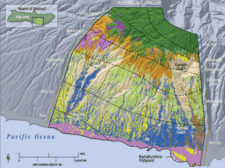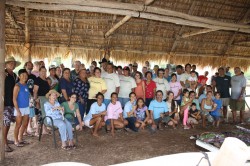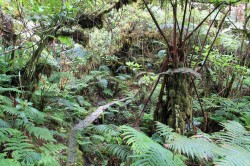Molokai Irrigation System: Safe for drinking?
Opinion by Walter Ritte
Molokai Ranch has decided not to build its own drinking water delivery line from its Well 17 to Maunaloa and Kaluakoi residents. The pure Well 17 ground water is put into the Molokai Irrigation System (MIS), which uses a large open-air agriculture reservoir. The water then goes into the MIS transmission line past the airport to Mahana. It is then pumped up the hill into another open-air reservoir and treated through a sand filter before being delivered to west end residents.
A dangerous situation now exists, as the open air MIS is now surrounded by Monsanto’s GMO fields.…















